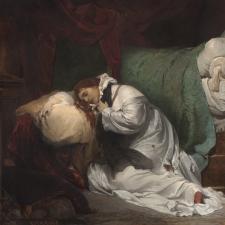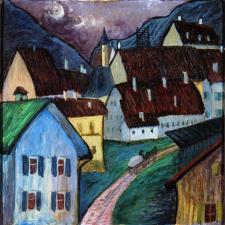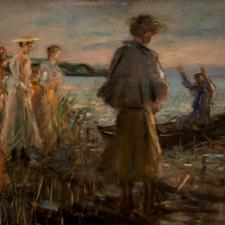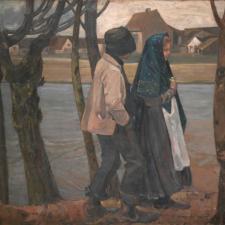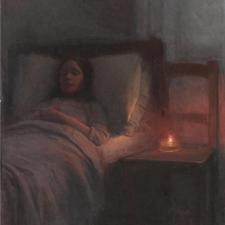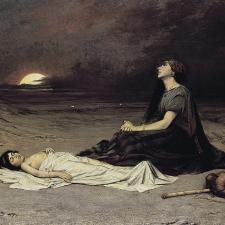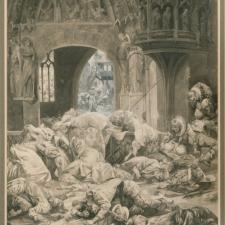The exhibition is one of the main projects of the official programme of Pilsen – the European Capital of Culture 2015.
The exhibition presents artists representing the well-known Munich school of painting, Munich Jugendstil and the avant-garde movement of the group Der Blaue Reiter. Among them there are great artists like Carl Theodor von Piloty, Gabriel von Max, Franz von Lenbach, Wilhelm Leibl, Franz von Stuck, Wassily Kandinsky, Alexej von Javlensky or Paul Klee. The exhibition also includes work of the Czech artists living in Munich at that time – Václav Brožík, Alfons Mucha, Joža Uprka, Jakub Schikaneder, Emanuel Krescenc Liška, Ludvík Kuba, Jan Autengruber and others.
The term „shining metropolis of art“ in the title of the exhibition has been borrowed from a famous Thomas Mann´s novella Gladius Dei from 1902. In the second half of the 19th century, Munich acquired the reputation of being one of the main artistic centres of Europe, especially when the art of the Munich School became a treasured phenomenon on an international scale. Munich has been the subject of interest from young artists from all over the world, including a strong Czech community. Artists from the Czech Lands either acquired their education at the local Academy of Fine Arts or at private art schools. Munich presented an alternative to training in Paris, or the level below it, and preceded other art centres in Central Europe such as the ones in Prague, Vienna, and Berlin amongst others. After the accession of Art Nouveau in the 90’s, the specific concept of Munich school transformed itself into a pluralistic spectrum of artistic tendencies. These then became an incipient ground for the appearance of modernists and avant-gardes in the first decades of the 20th century. In the eyes of Czech visual artists, Munich was exceptionally attractive up until the end of the “long 19th century” at the end of the First World War. Art enjoyed privileged status there as early as the times of King Louis I and it became an important part of the political representation of Bavaria. Artists, many of whom boasted noble titles from the Bavarian Kingdom, acquired a special social status. Certain pictures were seen as sensational in the public eyes and this level of popularity allowed them to be presented separately in many places.
The reception of Munich art in Bohemia, Moravia and Silesia took place in various forms, from the training of young artists to its reflection in the Czech periodicals and mutual cooperation between the Munich and Prague Kunstverein (Fine Arts Union), which led to artists of both cities appearing at regular annual exhibitions. The present exhibition is predominantly devoted to painting, which enjoyed a privileged status within the Munich School of Art, and (used) graphics. Sculpturing is also represented by two items. The time period between 1870 up until 1918 is the period from the glorious era of the Munich School up until the end of the First World War, which changed the map of the world including its culture centres of the time. This was a time of several artistic trends in the Bavarian metropolis: The Munich School of religious and historical painting, as represented by the significant pedagogical figure of Carl Theodor von Piloty (included in his group of most significant pupils was the Prague-born Gabriel von Max), whereby we place the artworks from this school into the category of “salon” art, linked to the activity of Kunstverein; landscape painting, especially from the circle of the artist colony in Dachau (one of its key members was the Olomouc-born Adolf Hölzel), Jugendstil and the association the Munich Art Nouveau, with its own exhibition and publication platform and with a wide spectrum of artistic tendencies from naturalism to impressionism and symbolism along with, finally, avant-garde tendencies directed towards expressionism and the abstract of the Blaue Reiter (Blue Rider) group.
Foreign artists who integrated new impulses into local art both on short-term and long-term scales, contributed in a basic manner to the inner dynamics of the artistic metropolis. Along with Hungarians and Poles, Czech artists accounted for one of the most important and most numerous communities in Munich. Although we are dealing with a significant phenomenon of a change in art on an international level, which affected individual national art communities in Munich at the turn of the 19th and 20th centuries, it has only been devoted scholastic attention in recent times. The impetus was the anniversary of 200 years of activity of the Munich Academy in 2008. In terms of a selection of artists at this exhibition, then one should mention some acknowledged representatives of artistic Munich such as Franz von Lenbach, Wilhelm Leibl, Franz von Stuck or avant-gardes from the Blaue Reiter group and artists from the Czech Lands, both Czech- and German-speaking, who had the Bavarian metropolis to thank as a place of their art training. Some of them, such as Gabriel von Max and Adolf Hölzel, settled in Munich permanently and maintained the contacts between their new and old countries. Artists of Czech origin were distinguished by the longest stay in Munich and the activity of František Bohumil Doubek, František Ondrúšek, Ludvík Kuba and Jan Autengruber. The exhibition has two main parts – synchronous, focused on the topic of “the City of Artists”, and diachronic, with the definition of three large stages of Munich art.
PUBLICATION
At the occasion of the exhibition, The Gallery of West Bohemia in Pilsen together with the publishing house Bárta & Bárta publish a Czech-German book of the same name, written by a team of Czech and German experts (Ute Strimmer, Caroline Sternberg, Markéta Theinhardtová, Eva Bendová, Šárka Leubnerová, Veronika Hulíková, Gerhard Leistner, Sandra Uhrig, Roman Zieglgänsberger, Alena Pomajzlová, Tomáš Winter), led by art historians Aleš Filip, (Masaryk University in Brno) and Roman Musil (director of the Gallery of West Bohemia in Pilsen). Number of pages: 243; number of reproductions: 168.
Exhibition concept: Aleš Filip, Roman Musil
Curator: Ivana Jonáková
Graphics and architectural solutions: Jaroslav Bárta, Matěj Bárta
Language editions of texts: Kateřina Dejmalová (German), Klára Kuběnová (Czech)
Translation: Jürgen Ostmeyer (German), Karel Dolista, Magdalena Štulcová (Czech)
Installation: Jan Jirka, Petr Kutek, Miroslav Tázler
Digital prints: Milan Brát, Fotonova
Sawn graphics: Jakub Čermák
Accompanying programs: Jiří Hlobil, Iveta Řežábková, Marcela Štýbrová
The exhibited artworks have been kindly lent by the following institutions:
The Kodl Gallery in Prague; The Gallery of Modern Art in Hradec Králové; The Art Gallery of Carlsbad; The Visual Art Gallery in Ostrava; the Kunstforum Ostdeutsche Gallery in Regensburg; Lawrence Steigrad Fine Arts, New York; The Municipal Museum of Antonín Sova in Pacov; The Moravian Gallery in Brno; the Museum Villa Stuck, Munich; the Museum Wiesbaden; The Art Museum of Olomouc; the Museum of Velké Meziříčí; the Museum in Svätý Anton; The National Gallery in Prague; The Regional Gallery in Liberec; the Museum of Czech Literature in Prague; the Regional Museum of Polabí in Poděbrady; the Schloßmuseum Murnau; Slovácké Museum in Uherské Hradiště; the Städtische Galerie im Lenbachhaus und Kunstbau in Munich; the Museum of Decorative Arts in Prague; The Wallachian Open Air Museum in Rožnov pod Radhoštěm; The Gallery of West Bohemia in Pilsen; Der Zweckverband Dachauer Galerien und Museen in Dachau; the Jewish Museum in Prague; private collectors.
The exhibition is held under the auspices of the Minister of Culture Daniel Herman, the Governor of the Pilsen Region Václav Šlajs, and the Mayor of Pilsen Martin Zrzavecký.
The exhibition is organised in cooperation with the National Gallery in Prague, the Städtische Galerie im Lenbachhaus und Kunstbau in Munich, and the Kunstforum Ostdeutsche Gallery in Regensburg, with the financial support of Plzeň 2015 o. p. s., the Pilsen Region, the European Union (the Program of Cross-border Cooperation, Target 3, Czech Republic–Free State of Bavaria 2007–2013), The Czech-German Fund for the Future, the Corporate City of Pilsen, and The Foundation of 700 Years of the City of Pilsen.

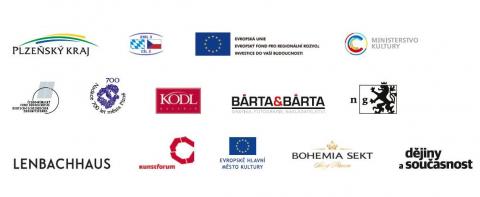
|
|






